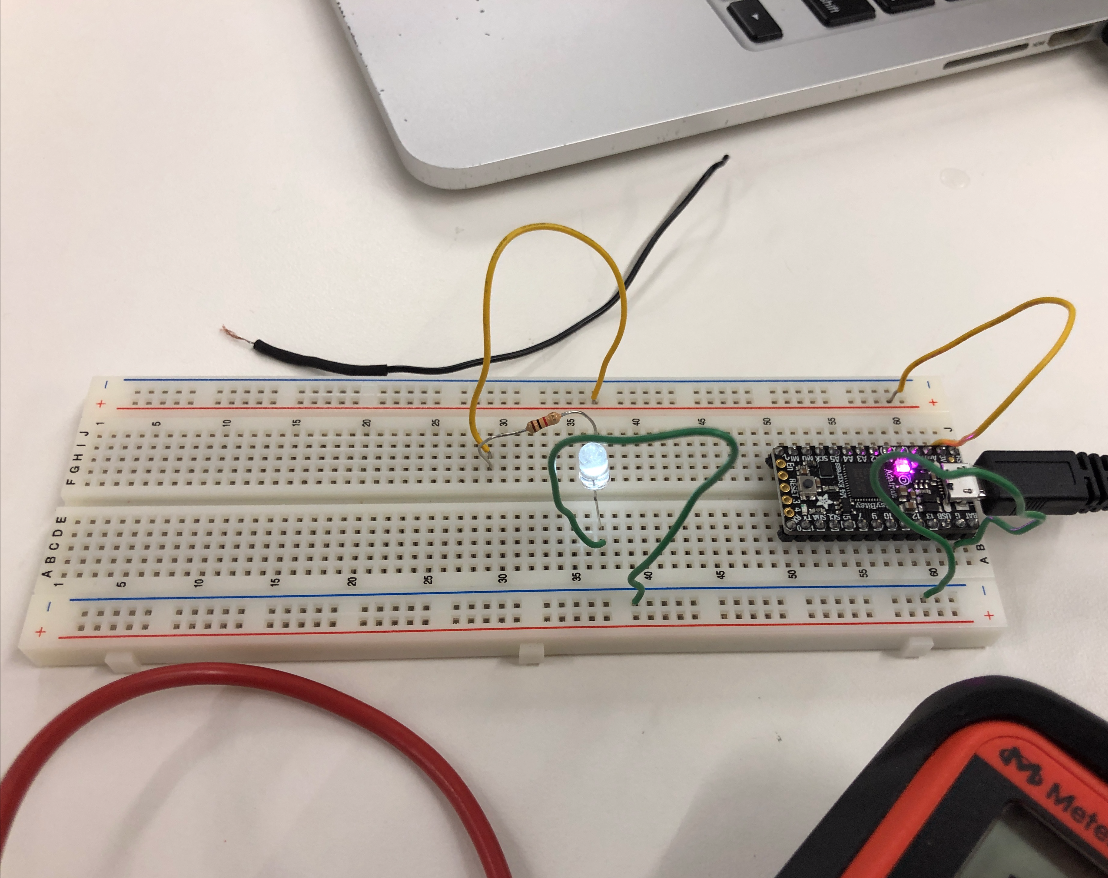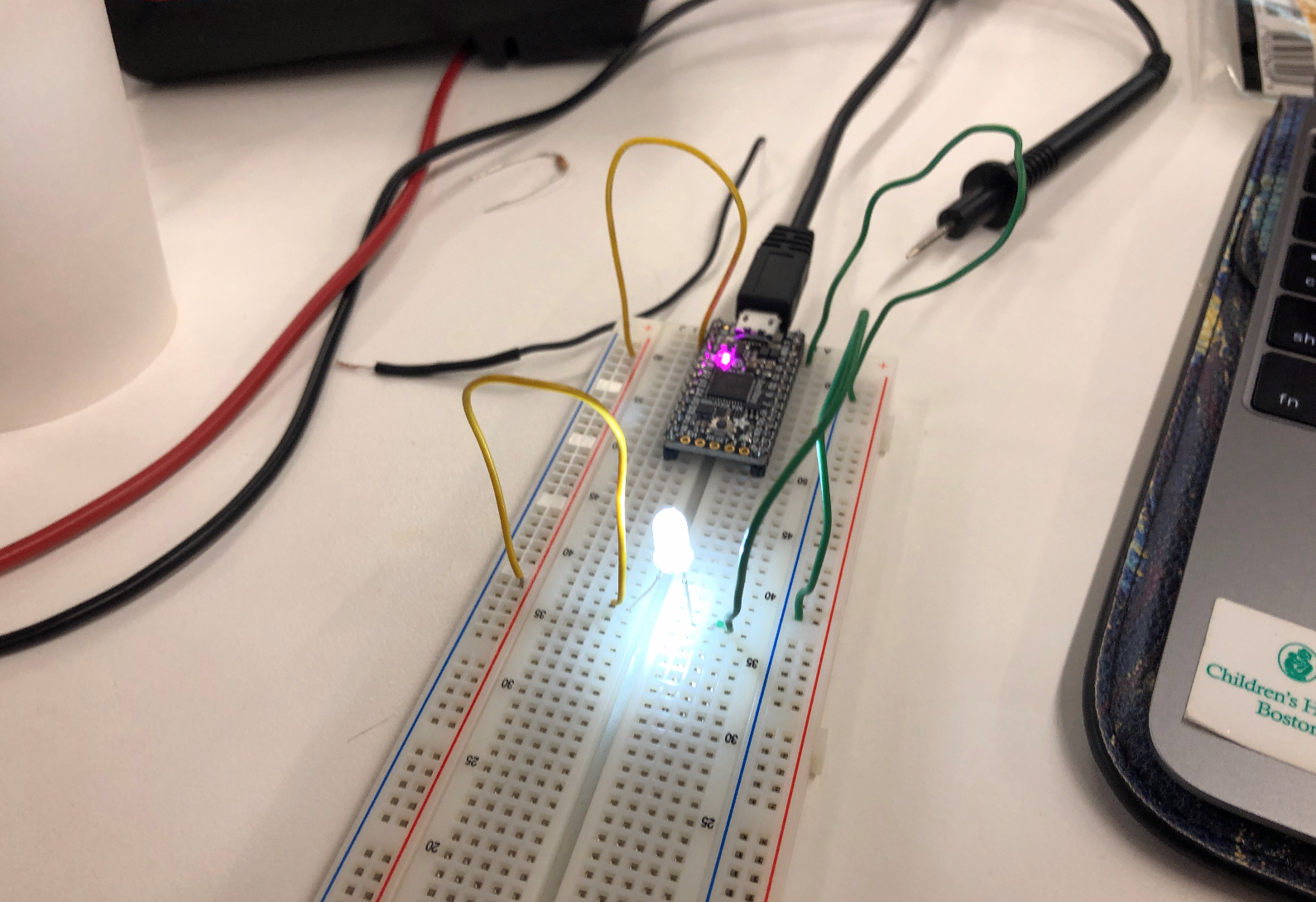
For this week, we worked with breadboards and the Arduino interface to build a circuit with a blinking light. While I’m not particularly experienced in doing anything with electricity, it was overall a pretty fun venture into starting to understand circuits better. I initially struggled to use the volt meter but eventually was able to situate the positive and negative ends properly on either side of the light to record a voltage difference. While experimenting, it was interesting to note the difference in light brightness when the light was preceded by a resistor, with stronger resistance coinciding with lesser brightness.


To begin, we took a breadboard and connected it to an ItsyBitsy M4 microcontroller powered by the USB port of my computer. We then connected a circuit to the microcontroller, using the 3V end to power the circuit and the "G" ground to ground it on the negative end of the circuit. in between the positive and negative rails, we experimented with a combination of resistors, lights, and both a light and resistor to see how voltage and current were affected. As previously specified, the intensity of the light was far higher when no resistor was used, but with a resistor the light glowed at a far more tempered brightness. This can be seen in the above images.
Next, we used the Arduino API to code a blinking light program with pre-written code. This was cool in that it helped me understand how the circuitry on the breadboard can potentially interface with more complex commands from the computer to eventually create more complex functioning of circuits.
As a potential final project, I would be interested in doing a project that somehow merges photography with physical fabrication. Right now, what comes to mind is a camera that concurrently takes photos or video from a number of different angles to create a 360 degree panorama.
An alternative, more out-there project, would be some sort of food rig that allows you to create a dipping sauce for chicken nuggets based on a flavor preference survey you fill out. Individuals would specify their relative preferences of different flavors like sweetness, spiciness, and umami, and the rig would combine ingredients (honey, red pepper flakes, soy sauce, mayonnaise, ketchup, sesame oil, malt vinegar etc.) in a way to match that preference.